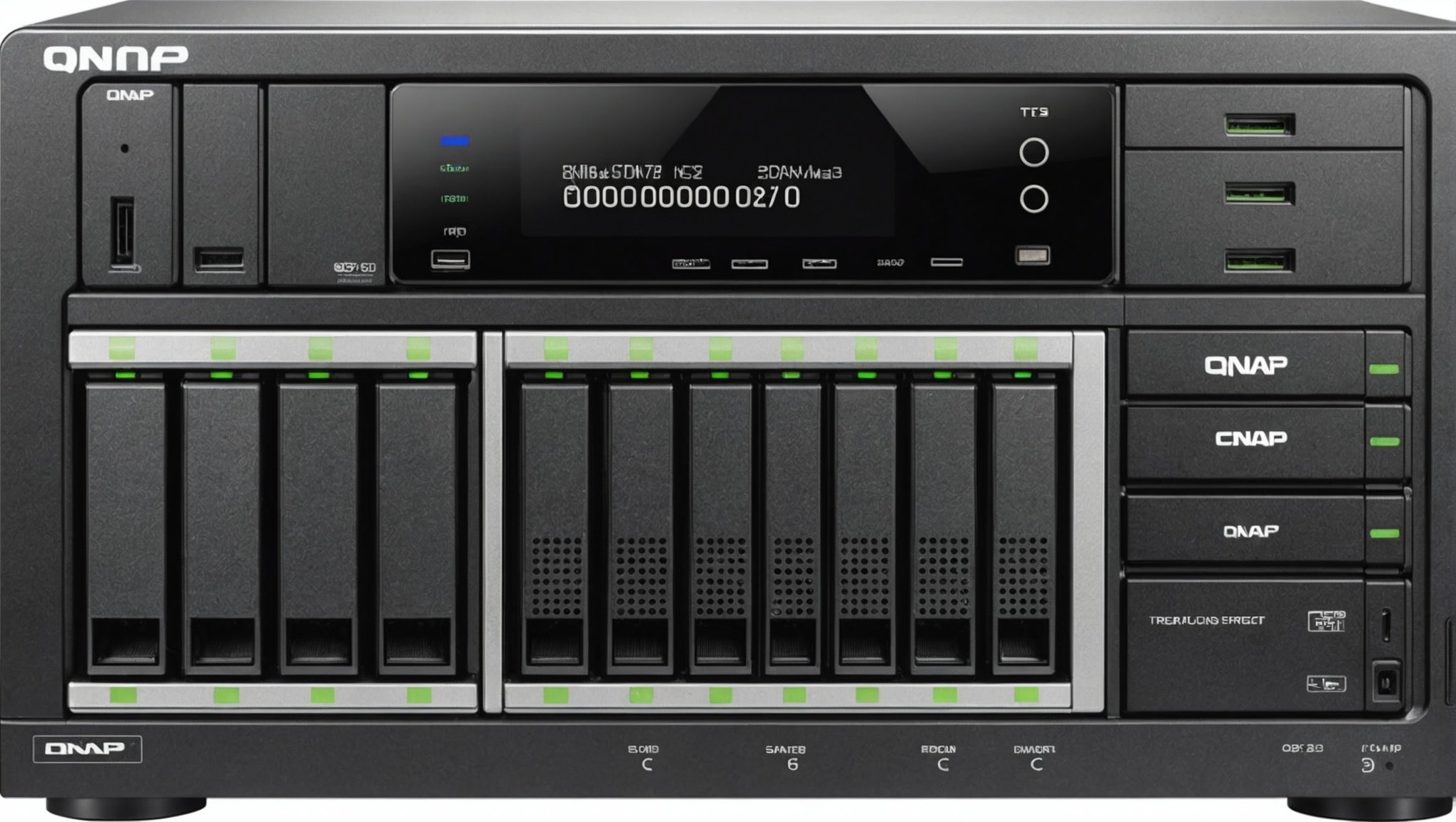In an age where data is the backbone of any small business, ensuring its safety and accessibility is paramount. The QNAP TS-673A NAS is a versatile and robust solution for data storage, offering multiple RAID configurations to safeguard information. Understanding the recommended RAID configurations for this device will enable your business to protect its data while optimizing performance and storage capacity.
Understanding RAID Configurations
RAID, which stands for Redundant Array of Independent Disks, is a data storage virtualization technology that combines multiple physical disk drives into one or more logical units. This technology provides an array of benefits, including data redundancy, performance enhancements, and increased storage capacity. For small businesses, choosing the right RAID configuration is crucial, as it can mean the difference between data security and potential data loss.
Have you seen this : What steps should be taken to optimize a Dell Precision 5540 for 3D rendering using Blender?
The QNAP TS-673A NAS is designed to support several RAID levels, each offering unique advantages and trade-offs. To make an informed decision, it’s essential to understand the implications of each RAID level for your specific business needs.
RAID 0: Performance Boost
RAID 0, also known as striping, distributes data evenly across multiple disks, which significantly improves read and write speeds. This configuration is ideal for businesses that prioritize performance and have non-critical data. With RAID 0, the QNAP TS-673A can deliver the high-speed data access that is necessary for tasks such as video editing and real-time applications.
Also to discover : How to configure a dual-boot system with Windows 10 and Manjaro Linux on a Lenovo ThinkPad T14?
However, RAID 0 does not provide any redundancy. If one disk fails, all data on the array is lost. Therefore, it is crucial to pair RAID 0 with a robust backup strategy. Businesses opting for RAID 0 should regularly back up critical data to external sources, ensuring that no information is permanently lost in the event of a disk failure.
In summary, RAID 0 is a recommended configuration for small businesses focused on performance but should be approached with caution due to its lack of redundancy. Backup remains a critical component of this strategy to mitigate data loss risks.
RAID 1: Simple Redundancy
RAID 1, or mirroring, involves copying identical data onto two or more disks. This configuration ensures that if one disk fails, the other disk(s) provide an exact copy of the lost data, offering strong data redundancy. For small businesses that prioritize data protection over performance, RAID 1 is an excellent choice.
With the QNAP TS-673A, RAID 1 provides the peace of mind that even in the event of a hardware failure, business operations can continue without data loss. Additionally, RAID 1 can improve read performance because data can be read from multiple disks simultaneously.
However, the primary trade-off is reduced storage capacity. Since data is mirrored, the total available storage is effectively halved. For example, if you use two 4TB drives in RAID 1, you will only have 4TB of usable storage space. Despite this limitation, RAID 1 is particularly advantageous for businesses dealing with sensitive or critical data and needing a straightforward redundancy solution.
In conclusion, RAID 1 is a reliable, easy-to-manage option for small businesses that value data redundancy and are willing to compromise on storage capacity for added security.
RAID 5: Balanced Performance and Redundancy
RAID 5 offers a balanced approach by combining both performance and redundancy. It requires a minimum of three disks and uses striping with parity. Parity information is distributed among all the disks in the array, enabling the recovery of data if a single disk fails. This configuration provides a good compromise between performance, storage efficiency, and data protection.
For small businesses, RAID 5 on a QNAP TS-673A provides the ideal mix of speed and redundancy. Read and write speeds are enhanced compared to a single disk setup, and the parity ensures that data can be reconstructed in the event of a single disk failure. This makes RAID 5 suitable for everyday business operations, including file storage, database management, and email servers.
However, RAID 5 has its limitations. The rebuild process after a disk failure can be time-consuming and may impact overall system performance. Additionally, it does not protect against multiple disk failures at the same time. Despite these drawbacks, RAID 5 remains a popular choice for small businesses due to its effective balance of speed and redundancy.
In essence, RAID 5 is a recommended RAID configuration for the QNAP TS-673A for businesses seeking a middle ground between performance and safety. It ensures data integrity while maximizing available storage space.
RAID 6: Enhanced Fault Tolerance
RAID 6 extends the capabilities of RAID 5 by adding an extra layer of parity, allowing for the failure of up to two disks. This configuration requires a minimum of four disks and is ideal for businesses that need high fault tolerance and cannot afford any data loss.
The QNAP TS-673A, configured with RAID 6, provides robust data protection. This is particularly beneficial for small businesses with large amounts of critical data or those operating in environments where disk failures are more likely. RAID 6 ensures that even if two disks fail simultaneously, data can still be recovered without loss.
While RAID 6 offers excellent fault tolerance, it comes at the cost of reduced write performance due to the additional parity calculations. Additionally, like RAID 5, the rebuild process can be lengthy and resource-intensive. Nevertheless, the enhanced fault tolerance makes RAID 6 a highly recommended configuration for businesses where data reliability is paramount.
To summarize, RAID 6 on a QNAP TS-673A offers a high level of data protection, making it suitable for businesses needing maximum fault tolerance. Although it requires more disks and can impact write performance, the trade-off is worthwhile for the added security.
Selecting the right RAID configuration for your QNAP TS-673A NAS depends on your small business’s specific needs and priorities. Whether you seek performance, redundancy, or a balance between the two, understanding the benefits and trade-offs of each RAID level is crucial.
- RAID 0 offers exceptional performance but lacks redundancy.
- RAID 1 provides simple and effective data redundancy, ideal for critical data.
- RAID 5 balances performance and redundancy, suitable for everyday operations.
- RAID 6 enhances fault tolerance, ensuring maximum data protection.
By carefully assessing your business requirements, you can choose the RAID configuration that best aligns with your operational goals and data protection needs. The QNAP TS-673A NAS, with its support for multiple RAID levels, provides the flexibility to adapt to various scenarios, ensuring that your valuable data remains safe and accessible.











